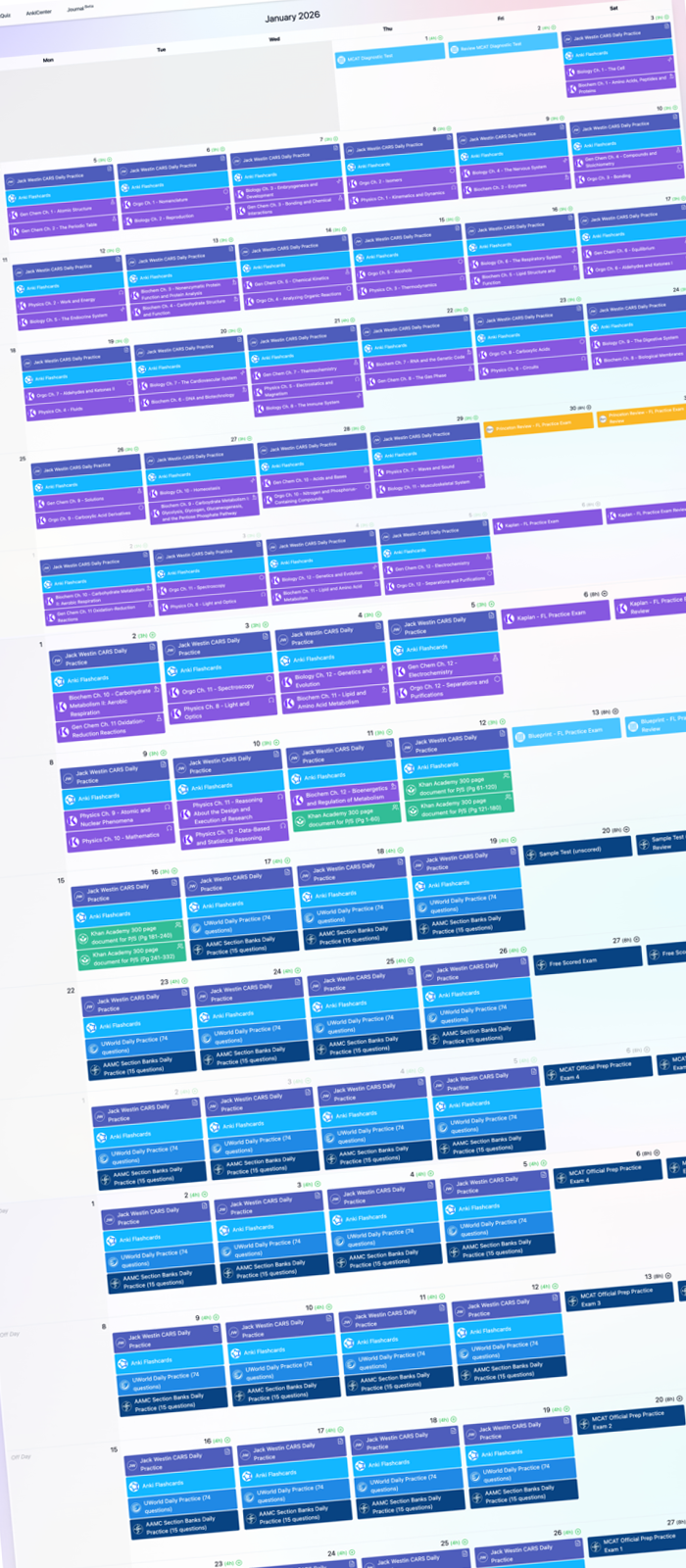How to Use Full-Length MCAT Practice Tests Effectively
Published on Jun 9, 2025
Full-length (FL) MCAT practice tests are one of the most powerful tools in your prep—if you use them correctly. They don’t just measure progress; they build test-taking stamina, expose weak areas, and teach you how to manage time and stress across a 7+ hour exam.
In this guide, we’ll walk through how to get the most out of your FL exams.
When to Start Taking Full-Lengths
You should begin full-length practice 6-8 weeks before your official exam date. By this time, you should be:
- Done or nearly done with content review
- Consistently practicing with question banks (UWorld, AAMC Section Bank)
- Able to sit for ~3-hour blocks without excessive fatigue
If you’re following our 3-Phase MCAT Plan, full-lengths are part of Phase 3.
How Many Full-Lengths to Take
Most students benefit from 6–8 total FL exams. A typical breakdown might look like:
- 1–3 third-party FLs early (e.g., Blueprint, Kaplan, Altius)
- All AAMC FLs (must-do)
- 1 final FL ~5 days before your actual test
More than 8 can lead to burnout or diminishing returns if not reviewed properly.
Where to Get Full-Length Exams
Top resources:
- AAMC FLs: Gold standard. Use them for final benchmarking.
- Blueprint: High quality, realistic difficulty, strong analytics.
- Altius: Very tough, great for mental endurance.
- Kaplan: Slightly easier, good confidence booster.
- Princeton Review: Less popular, but usable if bundled.
How to Simulate Real Test Conditions
To make FLs effective, simulate the MCAT environment:
- Start at the same time as your test day (typically 8 a.m.)
- Use only the scheduled breaks (10 min, 30 min lunch)
- No phone, no music, no interruptions
- Use scratch paper, water/snacks like you would on test day
Treat these as full “dress rehearsals” so test day feels familiar.
How to Review Full-Length Exams
Reviewing a full-length can take 1–2 days. Here’s how to do it right:
1. Go Section by Section
- Skim your raw score
- Don’t worry about the scaled score too much early on
- Start with the section that felt hardest
2. For Every Missed Question:
- Identify why you got it wrong (content gap, misread, timing, overthinking)
- Revisit that topic if it’s a weak area
- Add to your flashcards or error journal
- Write out the correct reasoning in your own words
3. Look for Patterns
- Are you always missing inference CARS questions?
- Is your timing falling apart in C/P?
- Are you dropping focus in the last section?
Write down takeaways in your study tracker. You can also use the MCAT.tools Journal to capture all your review notes.
Final Tips
- Do NOT skip the review phase—it’s where the learning happens
- Avoid comparing your scores too early; trends matter more than any one test
- Prioritize sleep and recovery just like athletes before a big event
- If burnout hits, skip an FL and focus on light content review or CARS
Full-lengths can feel draining, but they’re the most high-yield thing you can do before your exam. Respect them, review them, and they’ll raise your score.
For more test day prep, check our MCAT Exam Day Guide.

